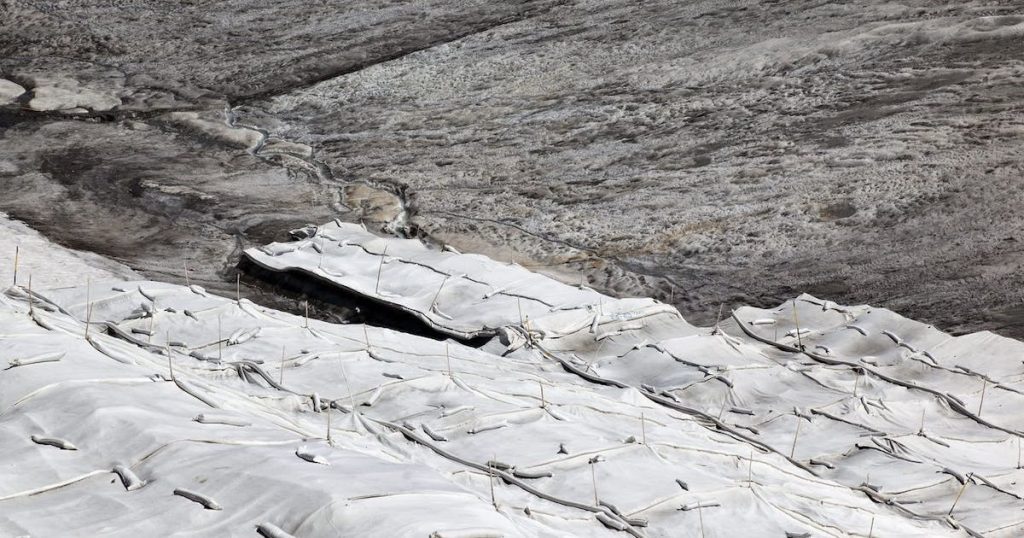Corner stone
As the glaciers recede, researchers are also losing data: so much ice on the Korvac glacier has melted this summer that it can no longer be measured.
The measurement program at Vadret dal Corvatsch in the Bernina Group in the canton of Graubünden certainly can no longer be continued because the ice is simply missing at the measurement points, glaciologist Matthias Haas reports. The only thing left for the team to do is collect and remove all the materials.
Haas, head of the Swiss Glacier Monitoring Network Swiss Glacier Watch (Glamus), described the ice loss recorded on smaller glaciers this summer as very severe. “What we were seeing was more powerful than anything we thought was possible,” Haas said. The Korvac ice sheets have melted, some of which have been around for about 7,000 years.
The fact that Corvatsch’s gauges have to be disassembled is no surprise. Early in 2019, it was decided to phase out measurement programs on three smaller glaciers – at Vadret dal Corvatsch as well as on the Pizol and Schwarbachfirn glaciers.
Since the loss rates were lower than in previous years, especially last year, Haas said it was hoped that the measurements would continue for a while. For technical reasons, further ice loss can no longer be measured.
With the snow melting, Haas said, the landscape has changed dramatically. Previously thin ice is disappearing in many places. In Corvatsch, a chain of ice ridges that are thousands of years old have completely disappeared. Only small remnants of ice could be seen.
For decades, glaciologists have been measuring glaciers as part of the Glamus in terms of snow volume in winter and thaw in summer in order to search for long-term changes in glaciers in the Swiss Alps. Glamos is jointly operated by ETH Zurich and the Universities of Freiburg and Zurich and is in close contact with the Expert Committee for Cryospheric Observation Networks.
Glaciers are losing half their volume
Glacier retreat is not a new phenomenon: the size of Swiss glaciers halved between 1931 and 2016. This was the result of a study published in early August by ETH Zurich and the Swiss Federal Research Institute for Forests, Snow and Landscapes.
Even if glaciers grew in some areas in the 1920s and 1980s, the climate in the 20th century was generally unfavorable for glaciers, according to the study. Over time, they melt faster and faster.
The study also showed that not all glaciers were equally affected by retreat. How much a glacier melts depends on its height, how flat the glacier is, and how much debris is covered.
olgr

“Tv expert. Hardcore creator. Extreme music fan. Lifelong twitter geek. Certified travel enthusiast. Baconaholic. Pop culture nerd. Reader. Freelance student.”







More Stories
Psychology: Researchers say spring cleaning is unnecessary
Space in City Hall has become more expensive
7 tips on how to learn to deal with your fears